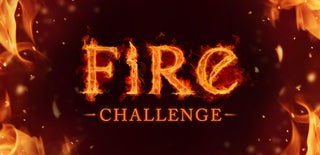Introduction: Anvil Restoration and Hardening
My Neighbor has had this anvil as a lawn ornament for years, and I finally got up the guts to ask him if he'd sell it to me. Then it still took me over a year to get around to buying it off him!!
It wasn't until I got it home that I fully understood what the full story of this anvil was. First off, my neighbor said his dad found it in a field in Temecula CA, ran over it with a tractor. It is a GE brand. There's not a lot of info about GE anvils online, but the company GE forge still makes horse shoeing nippers etc in the Central Coast area. The anvil still seems to be made by another forge, or the pattern might be used by another brand. It's an 125lb farrier's anvil.
So here's the cool thing, (though it meant more work) this anvil was never finished, meaning, it's essentially brand new. The original casting seams were still down the middle of the face, which also means that it wasn't ever hardened.
Step 1: Starting to Flatten and Smooth
So, how to smooth out/ flatten the face? I called several blanchard grinding places and they all quoted me in the range of $75-$100. I probably should have just gone with this, but my main obstacle was time. Time to take it somewhere. So I started with an angle grinder and moved to a belt sander. I got it pretty flat, but it was taking too long and too many belts.
Also, though the anvil wasn't finished it appears it had been used, and because it wasn't hardened, one of the edges was fairly beat up. This meant more needed to be taken off than I first thought. There were several dings on the underside almost like someone had hit it with a cold chisel to test it's hardness.
Meanwhile I'd been worrying about how to harden this beast!! I've read a lot about hardening anvils, watched youtube videos etc. I don't have a forge so I thought I'd call around to hardening services to see if they were up to the task. The one place that got back to me said they needed to know what exactly what alloy it was. This had been worrying me, because what if it was a cast iron piece of junk, and since there's so little info about GE anvils I wasn't sure. The newer anvils made by JHM that use the same pattern I heard were made of Cast Ductile Iron (CDI). I finally found the phone number for the current GE forge and left a message about this anvil. The next morning the owner of the company calls me back. He tells me that in the 70's he was in charge of shaping the horns of the anvils (I believe it was his dad's company at the time). He told me that the anvil is cast 4130 steel!! Phew!! Not the hardest alloy, but one that can be hardened!!
Step 2: Machining!!
So we had just gotten a small Jet Mill-Drill at school that no one had used and I didn't think it would be big enough for something this big. Lucked out, there was just enough overhead clearance!! Jerry rigged a clamping method, and got to work. Much better than belt sanding.
TO BE CONTINUED

Participated in the
Fire Challenge 2017













